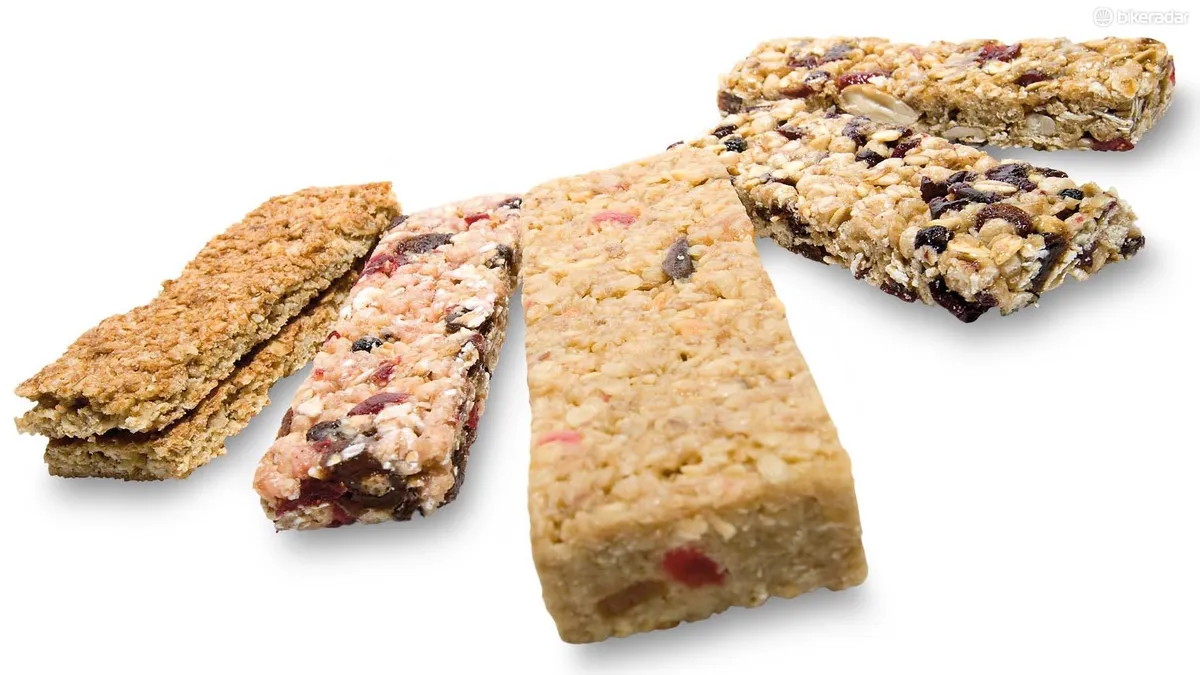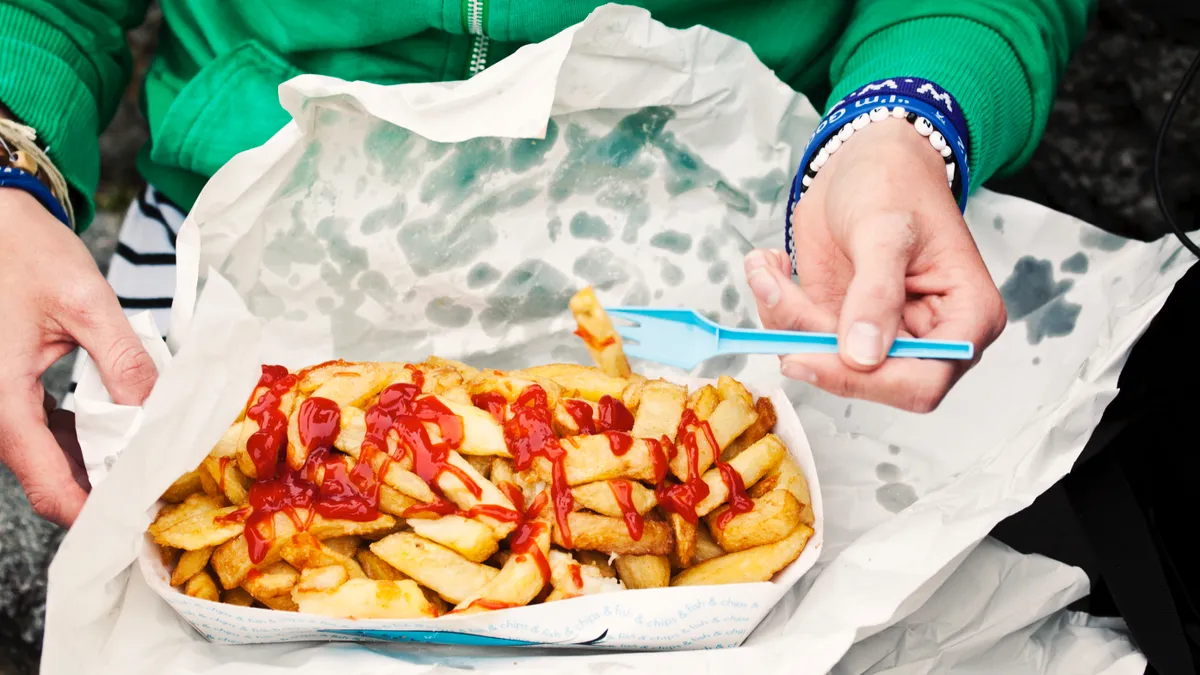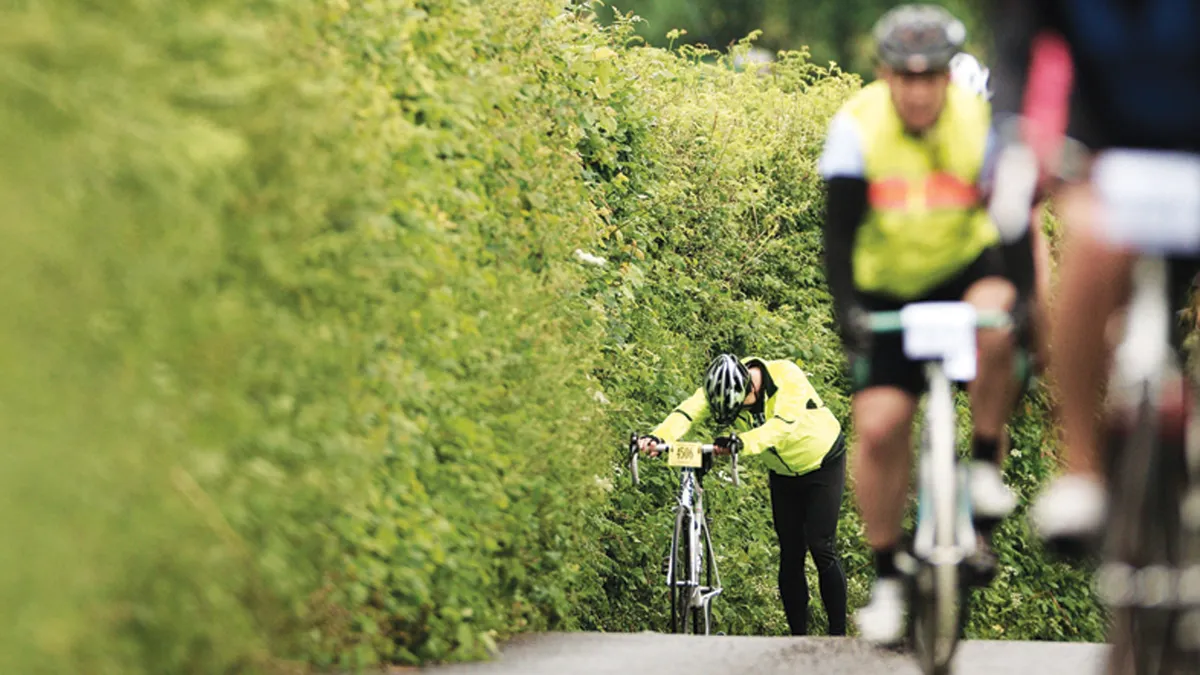Many cyclists don’t understand what a huge part their diets play in their training and racing. It’s a cliché, but when it comes to sports you are what you eat. And if you’re out there cycling every day, you really can’t afford to get it wrong. Here we show you how to spot and avoid the top 11 most common diet mistakes.
A good diet is about more than just staying slim. Yes, body composition is important in cycling, but it’s also about fuelling yourself correctly and eating the right blend of nutrients so that your body can recover and grow stronger after training. If you make too many mistakes with your diet then you’ll undermine all the hard work you’ve been putting in.
Maybe you think that you’re eating well already, or you know that you’re getting it wrong, but you don’t know how to fix it. Either way, now is the time to find out with this list of the top 11 common diet mistakes that athletes make. The more of them that you ditch, the faster and stronger you’ll be.
1. No pre-ride breakfast
Your body has been without food for several hours overnight, so you can’t expect to get the best out of it in your training or racing if you are under-fuelling the session.
Eat enough carbohydrates the day before and find things that are easy to eat or drink and that sit well in your stomach in the morning. This could be a yoghurt smoothie, half a banana sandwich or a slice of toast with peanut butter and a glass of fresh juice mixed with water.
2. Too long between meals
This sets up a starve-binge eating pattern. By the time you get your food you’re ravenous and more likely to overeat the wrong things. This creates an insulin surge, which sends fat storage into overdrive.
Plan your snacks so you never go without food or drink for longer than four hours. Good snacks include a pot of low fat yoghurt, a small handful of mixed nuts, fruit smoothies, fruit salad, good-quality bars such as Eat Natural or Nature Valley Chewy bars, malt loaf or Ryvita with cottage cheese and tomato.

3. Too much fibre
Here we’re talking essentially about ‘runner’s trots’. This is a really common problem in runners but it can also affect cyclists; in fact it can happen during any exercise when blood is diverted from the digestive system to the working muscles.
Eat bland, non-spicy, non-fibrous foods the night and hours before hard training and any big ride. Stick to meals such as white pasta with plain tomato sauce the night before, and in the morning have something like a small bowl of porridge or easily digestible cereal or some white toast with peanut butter.
4. Not refuelling on rides
You might think you can get away without gels or bars on shorter training rides, but if you’re out for a couple of hours then you need to keep your engine topped up. Work out how much carbohydrate and fluid you need and know how much is in the drinks and foods you’re consuming.
You should aim for 30-60g of carbohydrate per hour. The smaller you are, the less you will need.
5. Post-ride starving
Sometimes the last thing you want to do after a long session is to eat, but if you don’t, then subsequent training sessions will suffer and you’ll feel tired with heavy muscles.
Chocolate milk is superb and slips down very nicely; have a glass with some salted nuts or a peanut butter sandwich and that should see you through until the next meal. If you sit straight down to a meal then have something like spaghetti bolognese made with lean beef.
6. Post-ride binging
The other side of the coin is people who eat everything in sight, using the fact that they have done a hard session as an excuse to hoover up anything that falls in their path!
Plan your post-training and racing eating and make sure you have the right nutrition to hand at the finish.

7. Eating too late
When you train in the evening you might not get home until after 8pm. A big meal afterwards will still be churning away when you go to bed and can affect your sleep and increase fat storage.
Have your main meal at lunch, then a small post-training meal in the evening. This could be beans or eggs on toast, homemade bean and vegetable soup with bread, sushi with a fruit smoothie or one of the good one-pot ready meals.
8. Overeating carbs
Many athletes overestimate their food needs and eat vast amounts of cereal, pasta, rice, potatoes and bread.
Calculate your daily calorie requirement, taking your training and normal daily activity into account. There are several tools on the internet for this. Looking specifically at bread, try to eat fewer than four slices a day because it has more calories than other starchy carbs.

9. Drinking coffee randomly
While caffeine has a proven positive effect on performance, it needs careful management. It can act as a gut stimulant and cause stomach issues.
Work out your exact caffeine needs and take it before the session; its effects last for a few hours. Test in training and ease back on caffeinated drinks for a couple of weeks before a key race to increase its effects when you take it on race day.
10. Eating too much fat
Giving the body fat makes it very happy – it doesn’t have to do much to it apart from hide it away in the fat cells for storage. Fat is easy money for your body. It’s not quite as happy to spend that money, though – the body is quite reluctant to let go of it.
Melt your spread or butter a little before spreading it so it spreads more thinly. Eat hard cheese only once or twice a week and even then only about a small matchbox-size piece. Don’t glug olive oil over everything.
11. Measuring BMI not fat
Fat percentage is a better indicator of how lean you are than weight or Body Mass Index. Measure your fat weekly, when you’re at your most hydrated, using a body composition monitor (bear in mind it takes several months for fat percentage to show any realistic change).
Figures to compare yours with are 15-18% for the average male or 25-32% for an average female; 8% for the well-trained male rider or 24-28% for a well-trained female, and four to six percent for an elite male racer or 15-24% for an elite female athlete.

